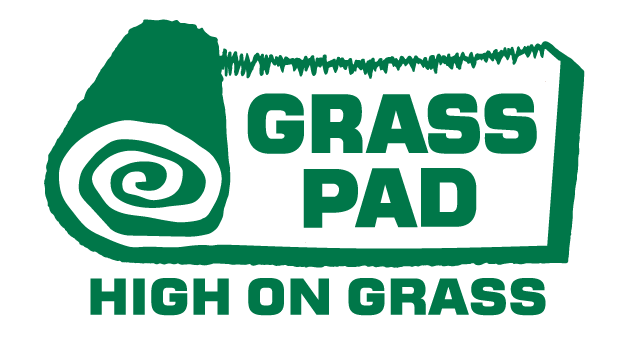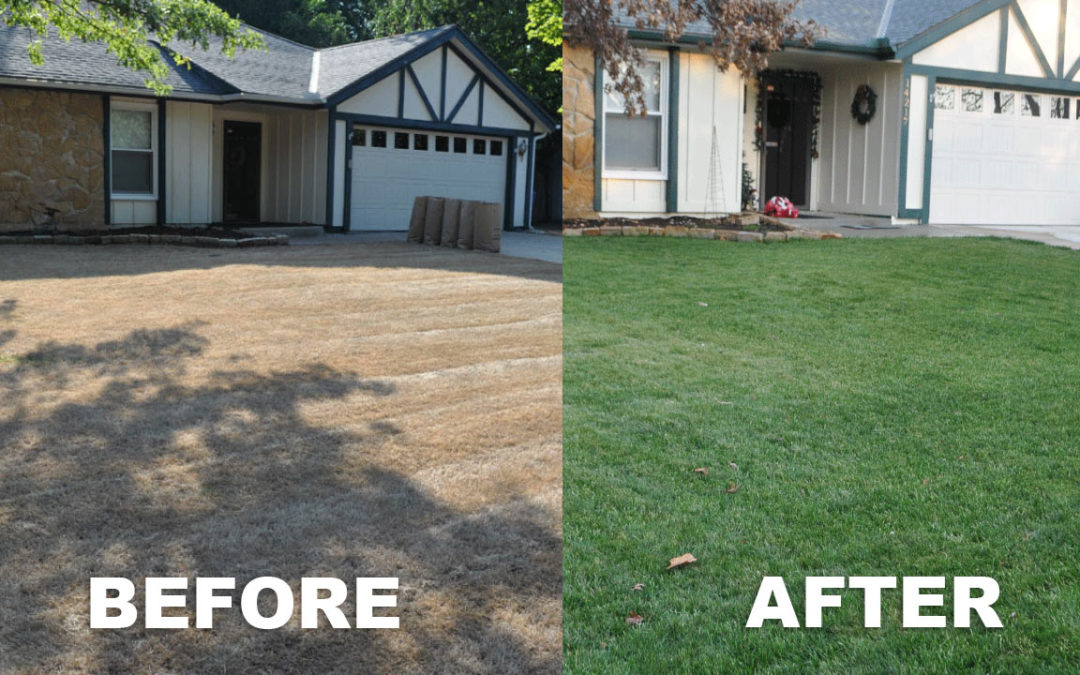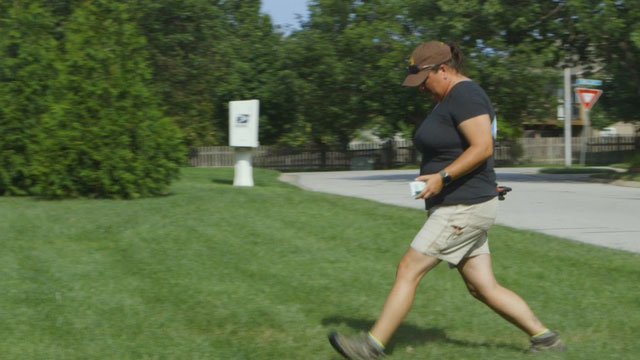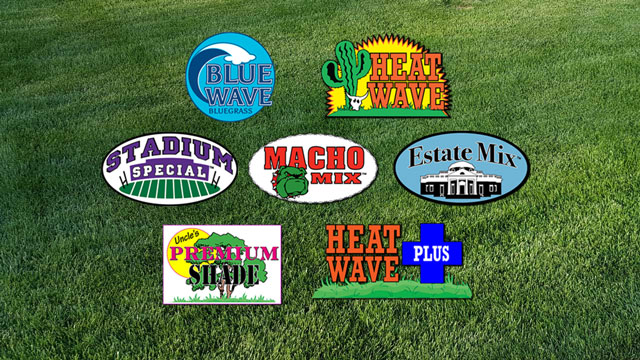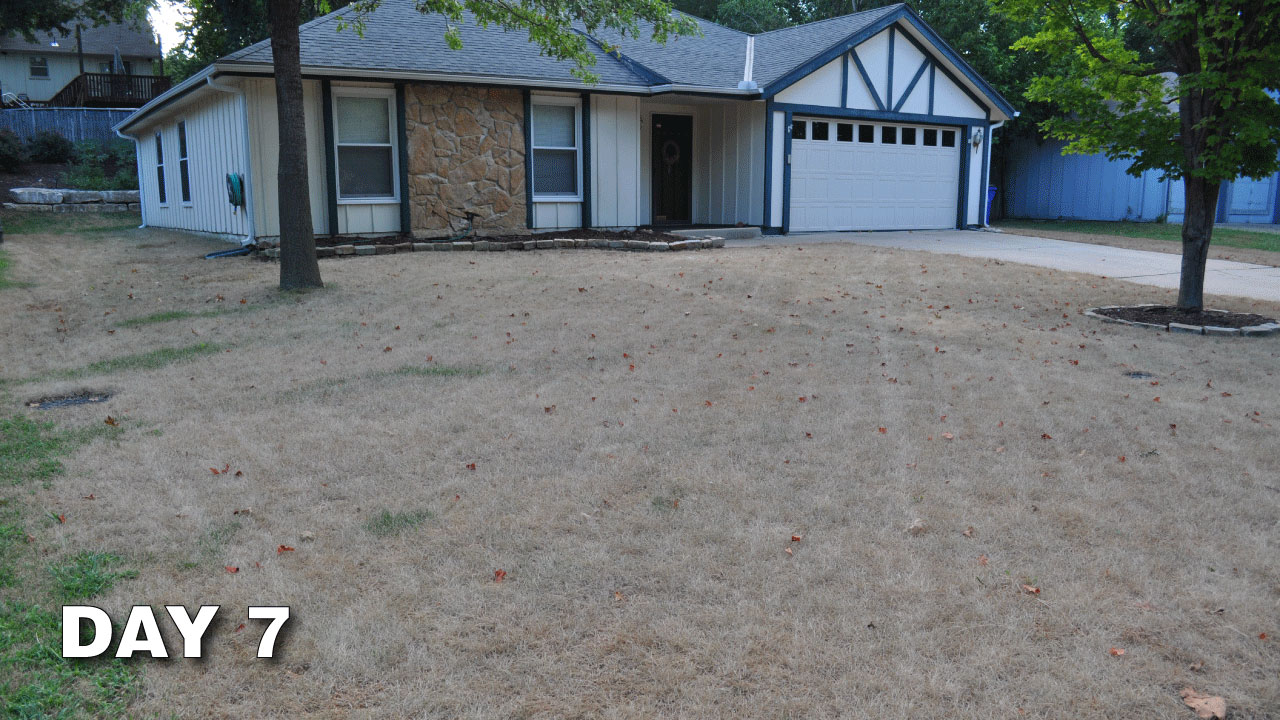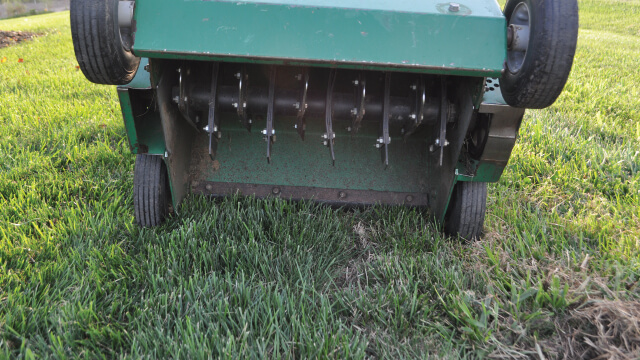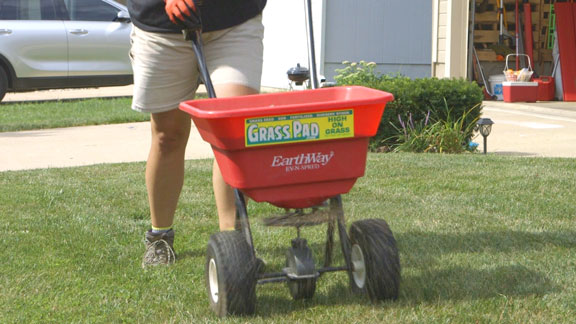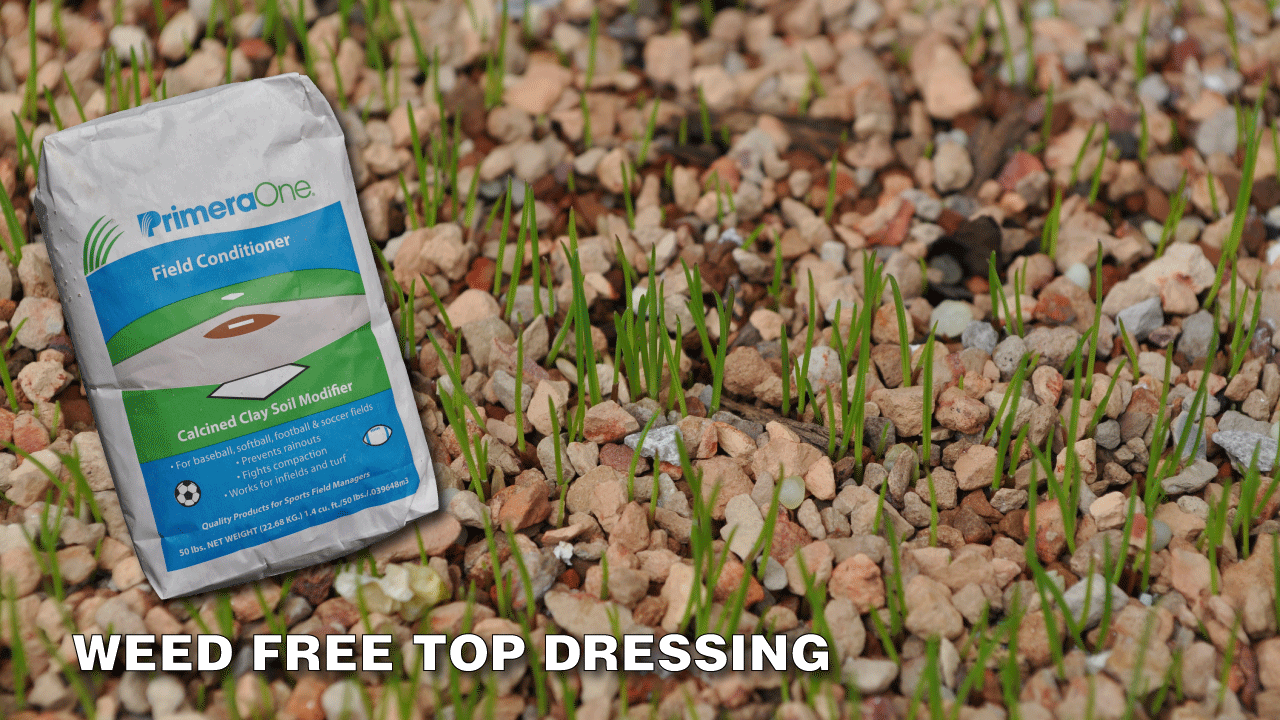Did you ever wish you had a delete button for your lawn and could start it all over? While we admire and encourage those who relentlessly defend their turf against drought, fungus, and weeds, there comes a time when the best strategy is to give up and “re-boot” your lawn. If you have ever thought about it, now is the time to get going. Total lawn restoration is all about planning and timing. If you’re ready to start over, begin in August.
How to Kill Your Lawn and Start Over
1. Measuring the Lawn
The first step to killing your lawn and starting over is to calculate the size of your lawn. Learning the dimensions of your lawn is important for estimating the correct amount of grass seed and fertilizer. A simple way to measure is to walk the perimeter, counting your steps. A typical pace is about three feet. Multiply length x width and write it down.
2. Choosing the Right Grass Seed
What are your anticipations for your grass performance? What is most important to fit your needs? For example, do you require drought tolerance? Do you need traffic tolerance? Do you want better disease resistance? Is your lawn shaded or full sun?
Because you will kill all the grass and weeds, the bare soil seeding rate is needed for the best results. Come on down to the Grass Pad and talk to our green team lawn experts, who will help you determine how many pounds you’ll need for your lawn. Bring your measurements!
How to Buy Grass Seed
Seeding rates are recommended in pounds (of seed) per 1,000 square feet. At Grass Pad, grass seed is sold by the pound. You only buy what you need. However; the more you buy, the more you save with our quantity discounts. Seeding rates are determined by the type of seed you choose. Grass types like fescues and perennial ryegrass are larger seeds and, on average, have about 240,000 seeds per pound. Kentucky bluegrass is a much smaller seed and, on average, has 1.4 million seeds per pound. Fescue and perennial ryegrass seeds are five times larger than bluegrass. Therefore, fescue and ryegrass require more pounds per 1,000 square feet to get the same density as bluegrass seed in the same area. To learn more about differences in grass seeds, come on down to the Grass Pad and speak to our green team of grass experts.
Seeding Rates by Grass Type: Learn Grass Pad Grass Seed Types
Why Grass Pad Seed is Better
Over the last 60 years, our grass seed buyers have developed a reputation in the industry for being the most demanding for grass seed quality, purity, and high performance. Grass seed mixes at Grass Pad have no fillers or coatings added. All the seed varieties sold at Grass Pad are University tested for performance and laboratory-tested for purity. Grass Pad allows homeowners access to the same quality turf products the professionals demand.
Uncle’s Tip: If you look for grass seeds from other sources, always read the label and look for the amount of weed seed, other crops, and inert matter in the analysis. Before buying, come down to the Grass Pad and compare the quality and the value.
See Related: How to Read the Grass Seed Analysis Label

3. Kill the Lawn in August
Spray Eraser, a non-selective herbicide, over the entire lawn and weeds, using manufacturers’ recommended mixing rates. Being careful to keep overspray off desirable shrubs, leaves, and flowers. Allow seven to ten days for the Eraser application to do its job and spot-spray any remaining green areas missed at the first application.
Uncle’s Tip: It’s hot in August, and during extended drought periods, it is recommended to water your lawn 2-3 times a week before applying Eraser. This will help bring the grass & weeds out of dormancy helping the plant to absorb more herbicide for a better kill. Do not mow for 72 hours before spraying. Increased leaf surface maximizes herbicide absorption.
4. Mow the Lawn Short
As soon as the lawn turns brown, it’s time to low-mow it. Mow the dead grass one or two notches lower than normal cutting height, being careful not to scalp your lawn. Use a grass catcher on your mower or rake to remove dead clippings and debris.
5. Improve the Soil
Before overseeding is the best time to add any needed soil amendments or soil conditioners, this is also the time to do core aeration, level the yard, or add organic matter to enrich the soil profile. Adding calcium using Grass Pad’s Lawn-Cal is beneficial for areas containing heavy traces of sodium from pet urine and ice-melters. Also, Lawn-Cal helps to break apart clay particles relieving soil compaction and enhancing drainage.
Uncle’s Tip: During the total lawn restoration process is an excellent opportunity for mechanical core aeration to improve compacted soil. However, a non-mechanical alternative is also available, using C20 Soil Builder. Soil Builder is a granulated carbon-based product you can apply using a spreader. Soil Builder works by feeding microbes in the soil and is ideal for reducing compaction around root zones under trees or areas you can’t reach or penetrate with a core aerating machine.
6. Preparation before Seeding
Before seeding, scratch the soil in bare spots using a cavex rake or garden weasel. For large areas, machine verticutting will significantly improve your seed-to-soil contact but is not a requirement.
Uncle’s Tip: After verticutting remove any debris that can block the seed from reaching the soil. Use a rake or a mower with a bagging attachment to get rid of the debris.
Can you Verticut and Core Aerate?
Yes, if you choose to do both, core aerate first, then verticut over the top of the cores. Verticutting first will break down the cores quicker.
7. Spread Weed-Free Seed
Apply your favorite Grass Pad seed at the recommended rate. Use a rotary broadcast or hand-cranked spreader for even seed distribution. Pay special attention to bare spots and apply extra seed in those areas. Find the recommended seeding rates for Grass Pad seeds at this link.
Uncle’s Tip: Take a handful of grass seed and start it in a small plastic cup on the kitchen windowsill. It will sprout quickly and preview the future.
8. Cover Bare Spots
After seeding, cover bare areas with a light top dressing of weed-free Primera Sports Field Conditioners or sphagnum peat. Top-dressing grass seed will hold moisture over the seed to improve germination.
Uncle’s Tip: Do not use straw, bagged topsoil, or composted peat as seed topdressings; they are contaminated with weed seeds.
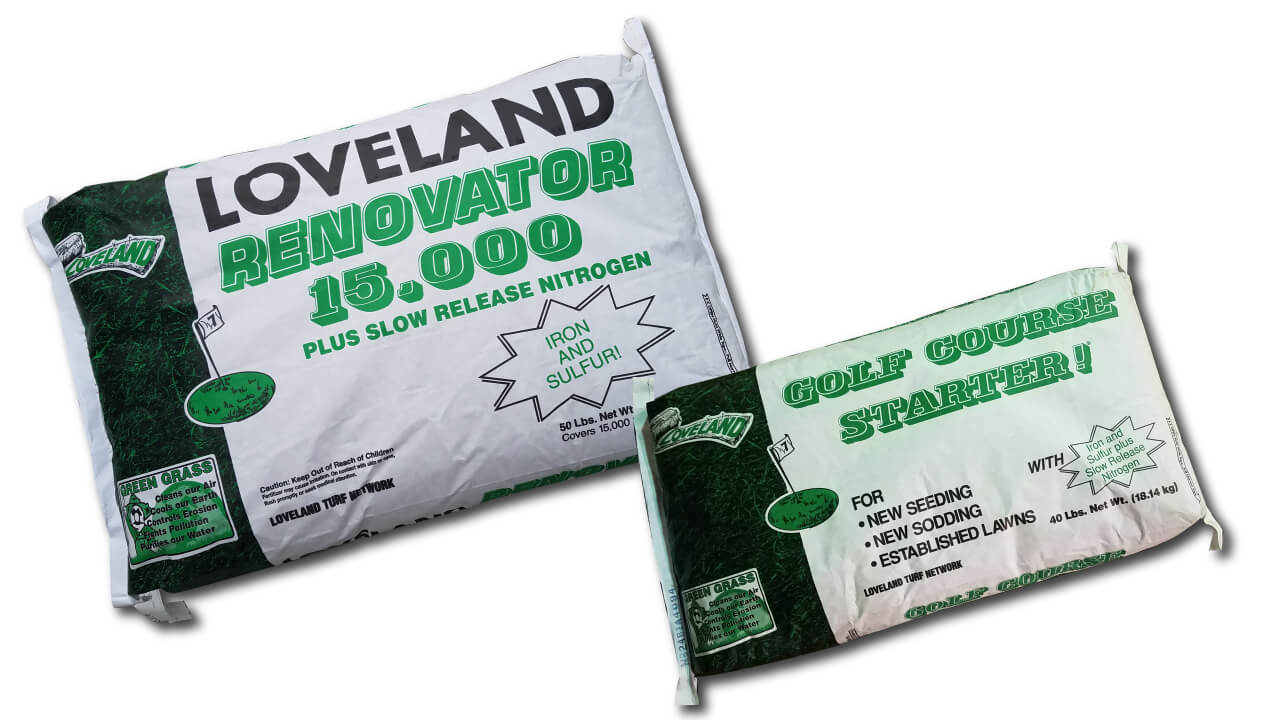
9. Feed the Lawn
Feed the lawn with an application of Loveland Golf Course Starter or Renovator on the same day as seeding. Feed the entire yard to provide new and established grass plants with the nutrients they need to grow and flourish.
10. Water Your New Seed
After fertilizing, water lightly so the soil surface is wet. Continue watering daily, keeping the seed consistently moist so the soil does not become hard or baked. This requires watering multiple times a day. As the grass seed begins to germinate and fill in, reduce the watering frequency, and increase the volume of water with each irrigation. Deep watering as the grass matures will train the roots to penetrate deep into the soil.
Uncle’s Tip: If you keep all areas consistently moist, you should see germination in 7-10 days in ideal conditions. If you don’t see any germination by day 7, increase your watering frequency, most instances of overdue germination are due to not watering frequently enough to keep the seed consistently moist.
11. Keep Mowing the Lawn
As the seedlings reach a height of three to four inches, mow to a height of three inches with a sharp mower blade at a time when the grass is not wet. Keeping your new grass at the height of three inches facilitates root establishment, which is essential for healthy turf.

12. Feed the Lawn Again
Wait four weeks after seeding and re-apply Loveland Golf Course Starter or Renovator. Finally, after another four weeks, apply Loveland Snowman, the most essential fertilizer to use over your new lawn. Snowman boosts root growth and supplies vital nutrients to enhance drought and traffic tolerance and promote early spring green-up.
More Related Articles to Total Lawn Restoration
How to Choose the Right Grass Seed
- Here are some considerations when choosing the best grass seed type for your lawn. Learn more at this link.
Verticutting vs Core Aeration
- What’s the difference between verticutters and aerators. Learn more at this link.
Mowing Height for Cool Season Grasses
- How low should you be cutting your lawn. Learn more at this link.
How Much to Water New Grass Seed
- Are you watering your lawn enough? Learn more at this link.
Benefits of Adding Calcium in the Soil
- Lawn-Cal helps compact soils. Learn more at this link.
Soil Builder – Non-Mechanical Aeration
- Improve compact soil by feeding soil microbes with carbon based Soil Builder. Learn more at this link.
